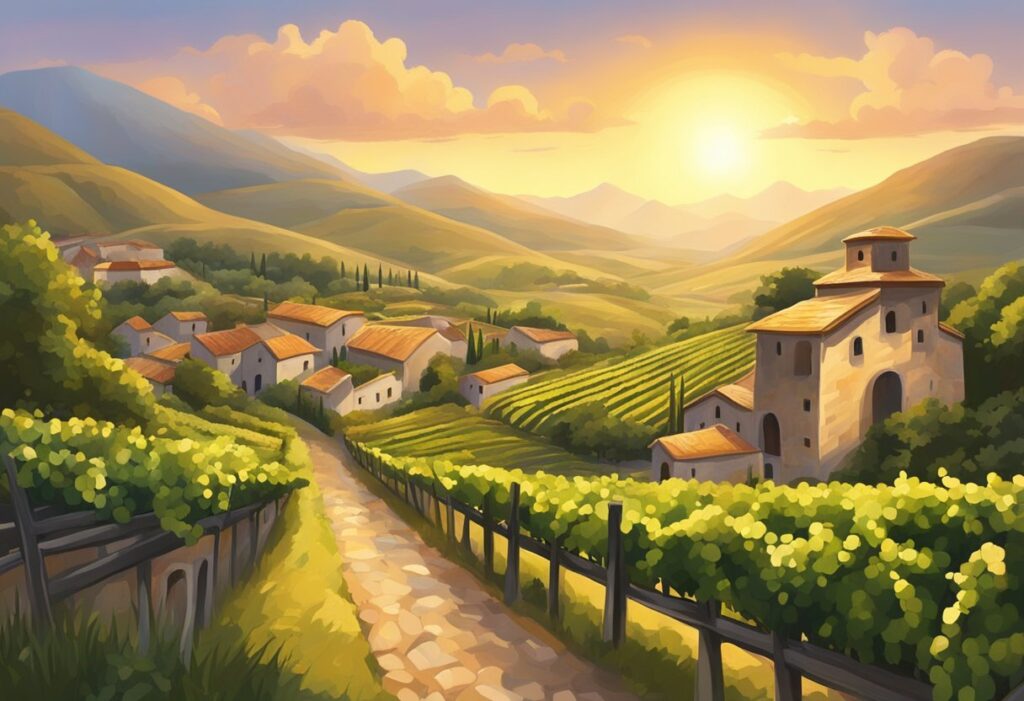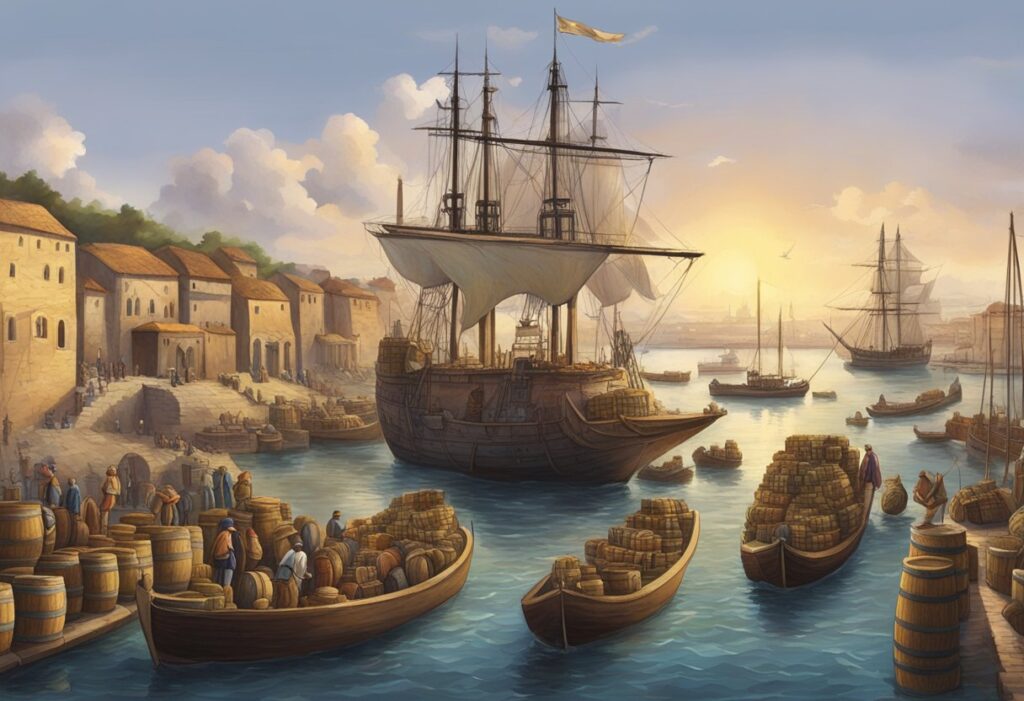The wine industry is continuously transformed by advancements in technology and creative methodologies. You may already be aware of how historical methods have laid the foundation for modern winemaking, employing fermentation techniques honed over centuries.
However, contemporary vintners are not only custodians of tradition but also pioneers, tapping into innovative practices that reshape the very essence of wine production. They leverage cutting-edge technology to enhance efficiency, improve quality, and address environmental concerns, ensuring that each bottle reflects both the rich heritage and the future of winemaking.
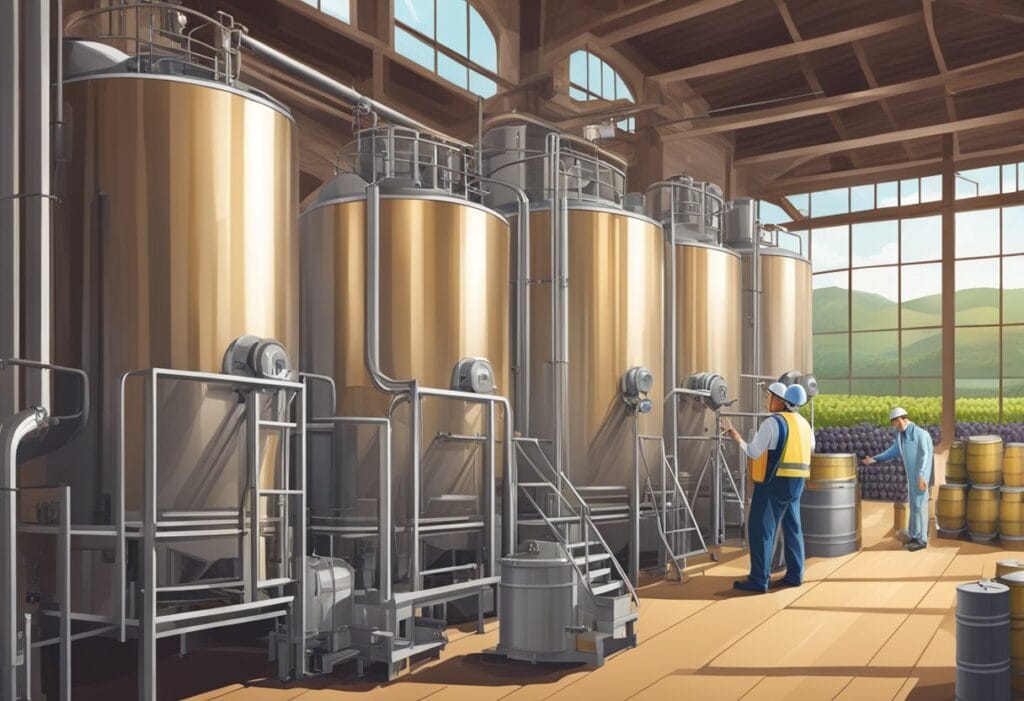
As you explore the influence of innovation on viticulture and enology, you’ll discover the intricate dance between respecting the environment and meeting consumer expectations. Today’s winemakers face the challenge of balancing ecological sustainability with the pressures of a competitive market.
They respond by integrating green practices into the growing and harvesting process, adapting to climate changes, and utilizing new tools to reach consumers in an evolving digital landscape. With an eye on the current trends and a hand in shaping the future, the wine industry stands at the precipice of a new era shaped by innovation, consumer interaction, and a commitment to sustainable practice.
Key Takeaways
- Modern technology enhances traditional winemaking methods, ensuring efficiency and quality.
- Environmental sustainability and climate adaptation are central to contemporary viticulture.
- Advances in wine production respond to market demands and shape consumer engagement.
History and Evolution of Wine Innovation
Discover how wine production has transformed through significant technological advancements and cultural influences over time.
From Tradition to Technology
Wine production has a storied history, deeply rooted in tradition, that dates back to the Neolithic era. It’s fascinating to see how the basic principles of winemaking have remained largely unchanged. However, your understanding and execution of these principles have been enhanced by technology.
The transition from manual labor to mechanical harvesting is only one example of how innovations have streamlined traditional processes. Information about the earliest wineries provides insight into how the foundation for today’s sophisticated production methods was laid.
Influential Innovations in Wine History
Throughout history, numerous inventions have played pivotal roles in the evolution of winemaking. The adoption of the amphorae for storage and transport was a game-changer, significantly impacting wine trade and preservation.
Cultural developments also introduced critical inventions such as the barrel and the corkscrew, which represented milestones in storing and serving wine. They enabled longer maturation and made wine consumption more convenient, leading to a widespread increase in its popularity.
The Role of Wine in Cultural Development
Wine has not only been shaped by culture but has also played a significant role in shaping cultural practices itself. From rituals to feasts, wine has been a symbol of culture and sophistication. Your understanding of wine’s influence can be enriched by exploring how it was perceived and used in antiquity. The innovation within winemaking reflects the value placed on it across different civilizations, and forms a narrative that intertwines with the human experience.
Current Innovations in Winemaking
Discover how advancements in technology and data analytics are revolutionizing the winemaking process, from vineyard to bottle.
The Impact of AI and AR in Winemaking
Artificial Intelligence (AI) is significantly enhancing the way you understand and interact with wine production. By analyzing massive datasets, AI can predict optimal harvest times and improve quality control. Augmented Reality (AR) is employed in wine marketing, allowing you to visualize vineyard tours and wine labels that come to life, enriching your education and buying experience. Companies like Tastry showcase how AI can play a role in flavor profiling and market matching.
Climate Smart Viticulture
Climate change presents challenges and opportunities in vineyard management. Climate smart viticulture has become critical for sustainability, using technology to adapt to and mitigate the effects of changing weather patterns. This approach includes water management and developing hardier grape varieties which contribute to longevity and efficiency in your vineyard operations.
Precision Agriculture and Robotics
Precision agriculture integrates GPS and 3D maps to manage vineyards with unprecedented accuracy. Robots and automated machinery enhance your productivity by performing tasks like pruning, harvesting, and monitoring crop health, with minimal human intervention. The information gathered can help tailor your vineyard practices to increase yield and maintain high-quality standards.
Advancements in Fermentation Technology
Modern fermentation technology is more precise and controlled, directly influencing your wine’s character. Techniques like micro-oxygenation inject oxygen at specific stages, influencing the color, bouquet, and mouthfeel of the finished wine. Temperature-controlled fermentation tanks enable you to craft wines with greater flavor consistency and stability, ensuring that each bottle meets your exacting standards.
Wine Production and the Environment
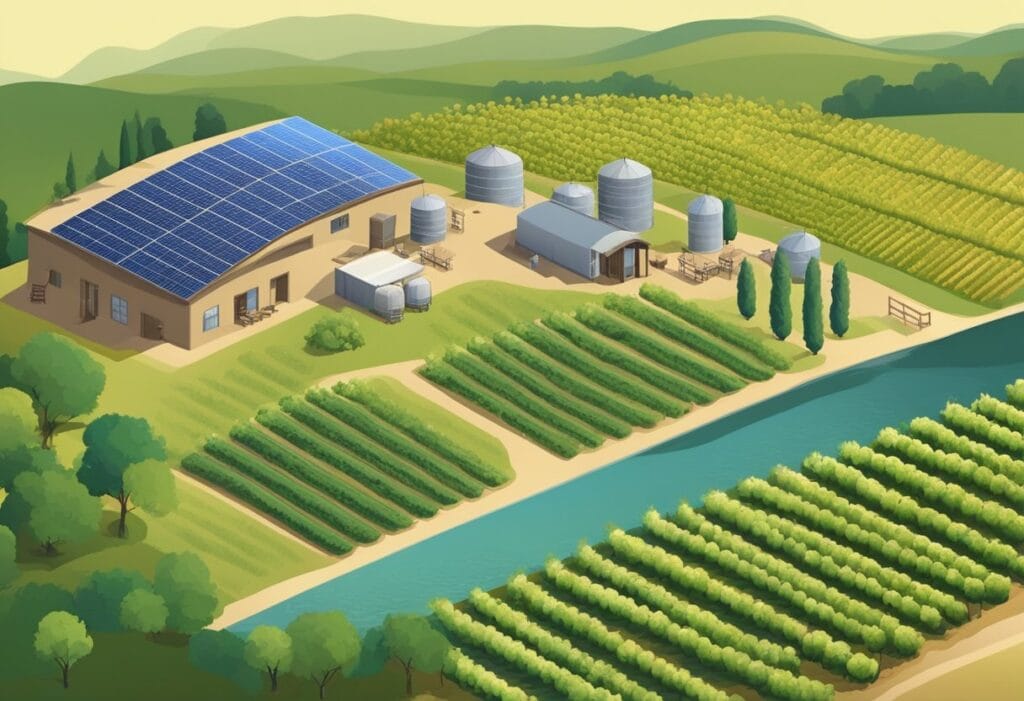
Innovations in wine production are increasingly focused on environmental impact, with strategies aimed at sustainable winegrowing, energy efficiency, reduced carbon footprint, and water conservation.
Sustainable Winegrowing Practices
Adopting organic farming techniques is a cornerstone in reducing the ecological footprint of vineyards. This includes the use of cover crops to promote soil health and biodiversity, and the avoidance of synthetic pesticides and herbicides, which aligns with sustainability efforts By doing so, you encourage a balanced ecosystem and promote environment-friendly practices.
Energy Efficiency and Carbon Footprint
Wine producers are turning to renewable energy sources like solar and wind power to reduce carbon emissions. Precision viticulture involves using technology to more accurately apply resources, such as water and nutrients, thus minimizing waste and reducing carbon output. Strategies for carbon footprint reduction may also involve offset programs and sustainability initiatives integrated throughout the wine production process.
Water Conservation Techniques
Water management is critical, given the industry’s dependence on water for vine survival yet scarce availability in many regions. Techniques to conserve water include regulated deficit irrigation, which uses careful monitoring of vine humidity levels to use water more efficiently. Treatment and reuse of wastewater also play a vital role in reducing overall water use in the wine industry.
Challenges and Opportunities in the Wine Business
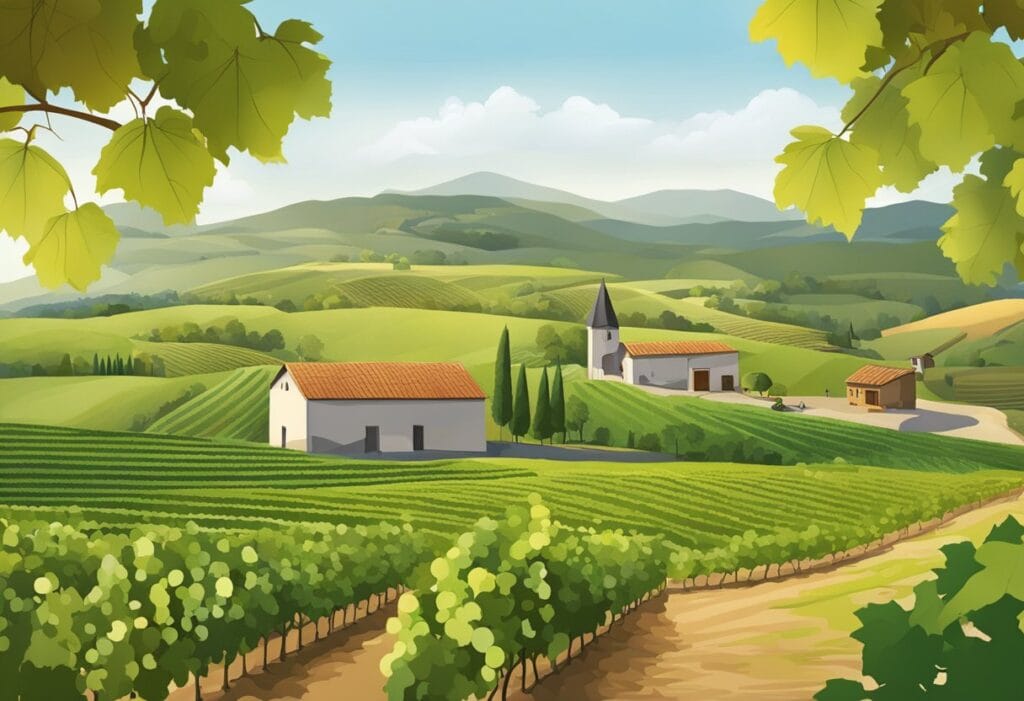
In the wine business, you are constantly faced with the balance of preserving tradition and embracing change. Below, we’ll explore critical areas within the sector where this balance is most apparent and decisive.
Navigating Global Wine Market Trends
The global wine market is characterized by fluctuating demand and consumer preferences. You need to be aware of these trends to adapt your portfolio effectively. For instance, amidst a backdrop of changing climates and a push for sustainable practices, you can explore new varietals that are more resilient to these conditions. New markets are emerging as wine consumption patterns shift, presenting an opportunity to expand your brand’s global footprint.
The Role of Transparency and Traceability
Consumers are increasingly focused on the origin and authenticity of their wine. You can leverage blockchain technology and QR codes to enhance transparency, allowing consumers to track a wine’s journey from vine to bottle. This practice not only builds trust but also serves as a unique selling point in a crowded market, where traceability is not a luxury, but a necessity.
Innovation as a Response to Wine Neophobia
Wine neophobia, or the hesitation to try new wine products, presents a significant challenge. However, it also offers the chance to introduce novelty in approachable ways. By understanding the Wine Neophobia Scale, you can gauge the market and guide your innovation strategy. Engage consumers with novel products that are carefully balanced with familiar flavors or tied to familiar experiences, widening your product’s appeal and mitigating the risk of rejection.
Consumer Relations and Wine Sales
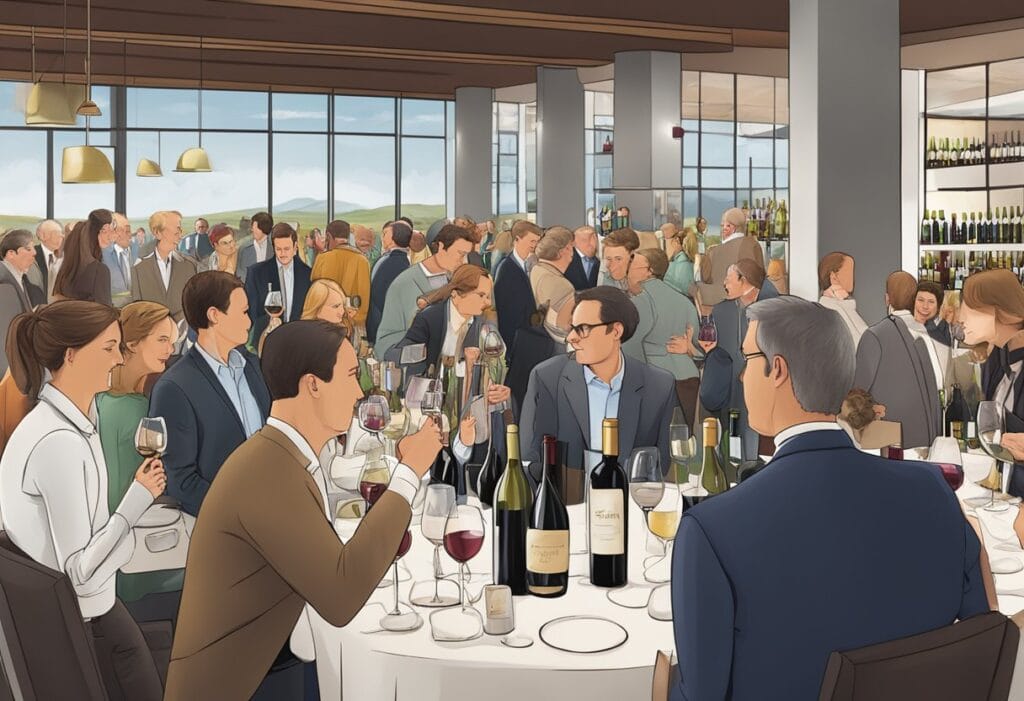
Understanding how wineries can foster relationships with you, the consumer, through digital means and data analytics is central to the strategy of boosting wine sales. The role of purchasing patterns among different sociodemographic groups, especially millennials, has become increasingly important.
Digital Transformation and Consumer Engagement
The wine industry is embracing digital transformation to enhance consumer engagement. Wineries are leveraging social media platforms and sophisticated eCommerce websites to reach you more effectively. Interactive virtual wine tastings and detailed online flavor profiles offer you direct access to the winemaking world, making it more convenient for you to explore and purchase wines.
The Influence of Data Analytics on Wine Sales
Data analytics play a pivotal role in understanding and shaping wine sales. By analyzing your buying patterns and preferences, wineries can tailor their marketing strategies to suit your tastes. Data on which wines you prefer, when you buy them, and your response to promotions enables a targeted approach that can drive sales efficiently.
Purchasing Decisions and Sociodemographic Factors
Your purchasing decisions are influenced by various sociodemographic factors. Research indicates that millennials have unique buying habits, preferring wines that are both sustainable and have a story. These insights allow wineries to adjust their sales strategies, ensuring they align with your values and preferences, ultimately influencing your decision to purchase.
Emerging Technology Trends in Viticulture
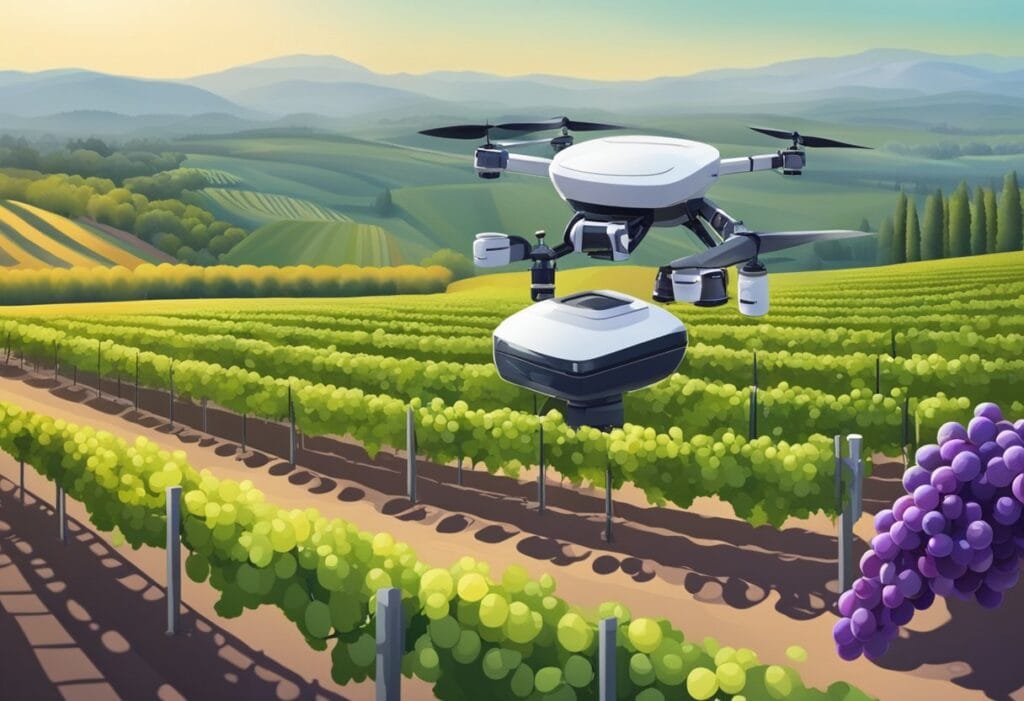
As you delve into the world of modern viticulture, recognize that analytical precision and efficiency are at the forefront, courtesy of advancements in technology.
Drone and Satellite Imagery for Vineyard Management
Utilizing drone and satellite imagery has revolutionized how you monitor and manage vineyards. You can now access detailed aerial views to analyze plant health, soil conditions, and even detect pests or diseases early. This remote sensing technology optimizes vineyard management by providing real-time data, allowing for more informed decisions on irrigation, harvesting, and resource allocation.
Winemaking and IoT
The Internet of Things (IoT) has permeated the winemaking process, enhancing your capacity to track and control fermentation conditions. From sensors measuring temperature and humidity to systems that automatically adjust these parameters, IoT introduces a level of precision in winemaking that was previously unattainable. This connectivity ensures that each stage of production is optimized for quality.
Innovative Packaging and Smart Labeling Solutions
Smart packaging is transforming your interaction with wine products. Labels equipped with NFC chips or QR codes offer you extended label information with just a tap or scan, including origin, authenticity, and even food pairing suggestions. For producers, this technology provides a robust tool for marketing and engaging with consumers, as well as combating counterfeiting.
In these ways, these technology trends are not only enhancing the quality and traceability of wine but are also paving the way for more sustainable and precise viticulture practices.
Future Outlook on Wine Production Innovations
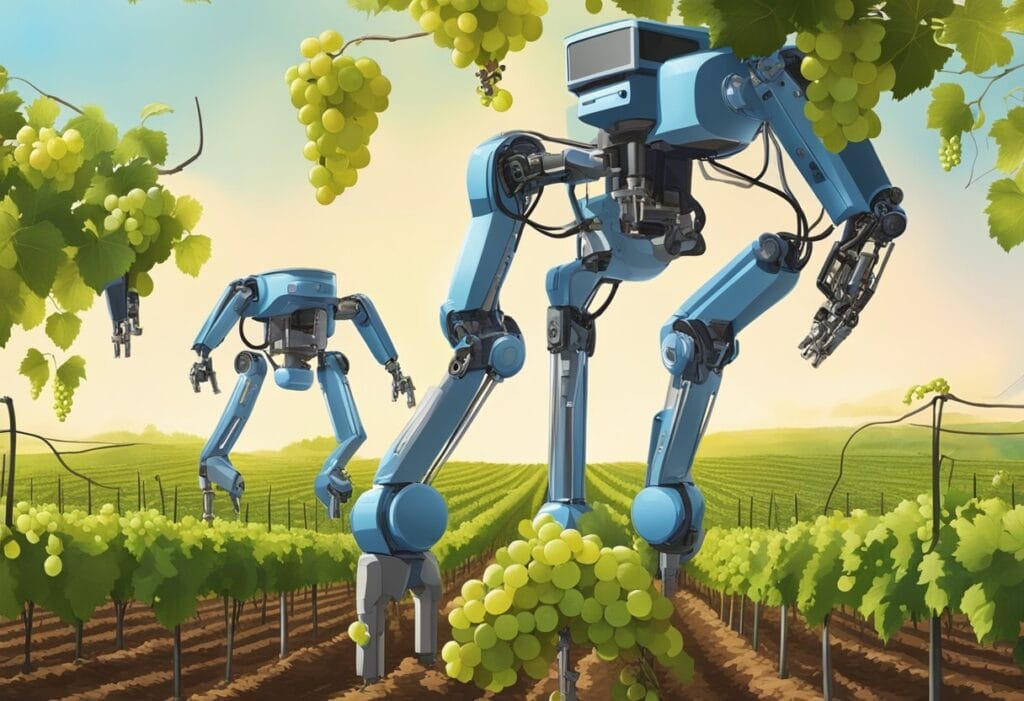
As you explore the horizon of wine production, you’ll find innovations leveraging NFTs and blockchain technology are not merely buzzwords but pivotal tools. These tools are set to redefine the wine market and offer unprecedented wine innovation.
Predicting the Impact of NFTs and Blockchain
NFTs (Non-Fungible Tokens) are poised to authenticate wine block chain transactions uniquely, providing you with a secure method to verify and trace the origin and authenticity of your wine purchases.
The integration of blockchain technology in wine production is set to enhance transparency, tackle counterfeit products, and allow for verifiable scarcity, potentially elevating the value of collectible wines. The anticipated shift towards these digital assets could transform how you trade and collect wine.
Potential Tech Solutions for Emerging Wine Markets
Emerging wine markets are not just catching up, they’re aiming to lead through innovative technology applications. From connected vineyards using IoT (Internet of Things) for real-time monitoring and optimizations, to nano-oenology that could revolutionize wine making at a molecular level, your future wine market experience is set for a sea change. The incorporation of intelligence wine cellars ensures wines are stored in optimal conditions, enhancing the quality that reaches your glass.
